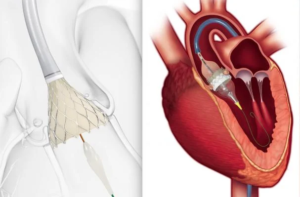Transcatheter Aortic Valve Replacement (TAVR) is a minimally invasive heart procedure which is performed to replace an aortic valve that fails to open. TAVR devices have advanced over the years but were still limited to treat anything beyond aortic stenosis. However, a new product has been announced for the treatment of both aortic stenosis and aortic regurgitation. The system consists of a self-expanding nitinol stent from porcine pericardial tissue.
The human heart has four valves that circulate blood in the correct direction. Each valve has leaflets that open and close when the heart beats. These leaflets sometimes fail to open which results in a narrowing of the aortic valve opening often known as Aortic Stenosis. This makes it difficult and causes the heart to work harder to pump enough blood into the aorta and throughout the rest of the body. Aortic Regurgitation is a condition that occurs when an individual’s aortic valve does not close tightly. This causes blood that was just pumped out of the left ventricle to leak right back into it. The leakage prevents the heart from pumping blood to the rest of the body.
The new device clips on to the native valve to anchor the valve instead of relying on calcification. New advancements like this continue to open up more options for individuals suffering from heart disease. It is a less invasive approach to treating an unhealthy valve compared to open heart surgery. The device has the potential to be the first in the world to treat aortic regurgitation in patients that are at high risk.


